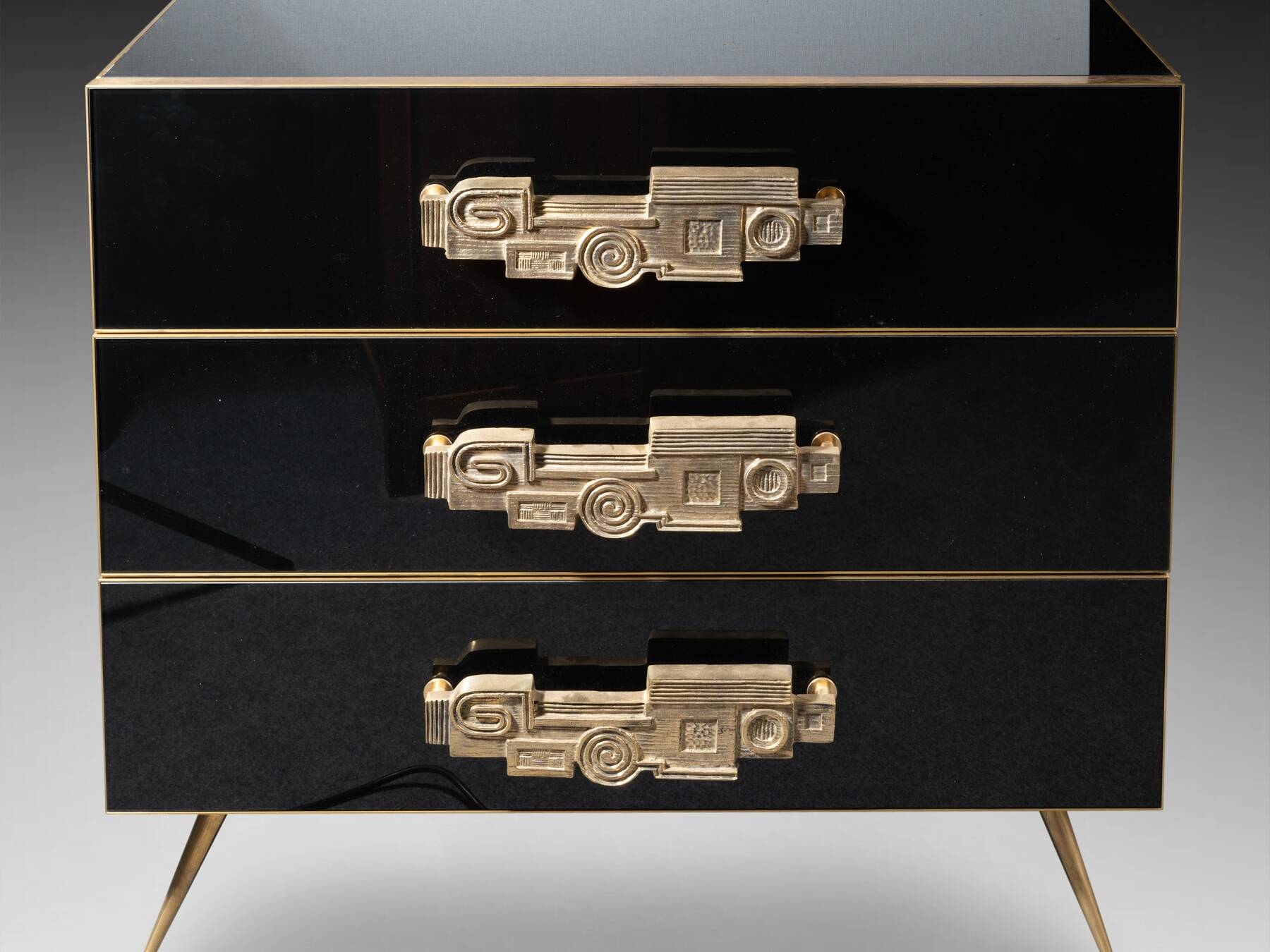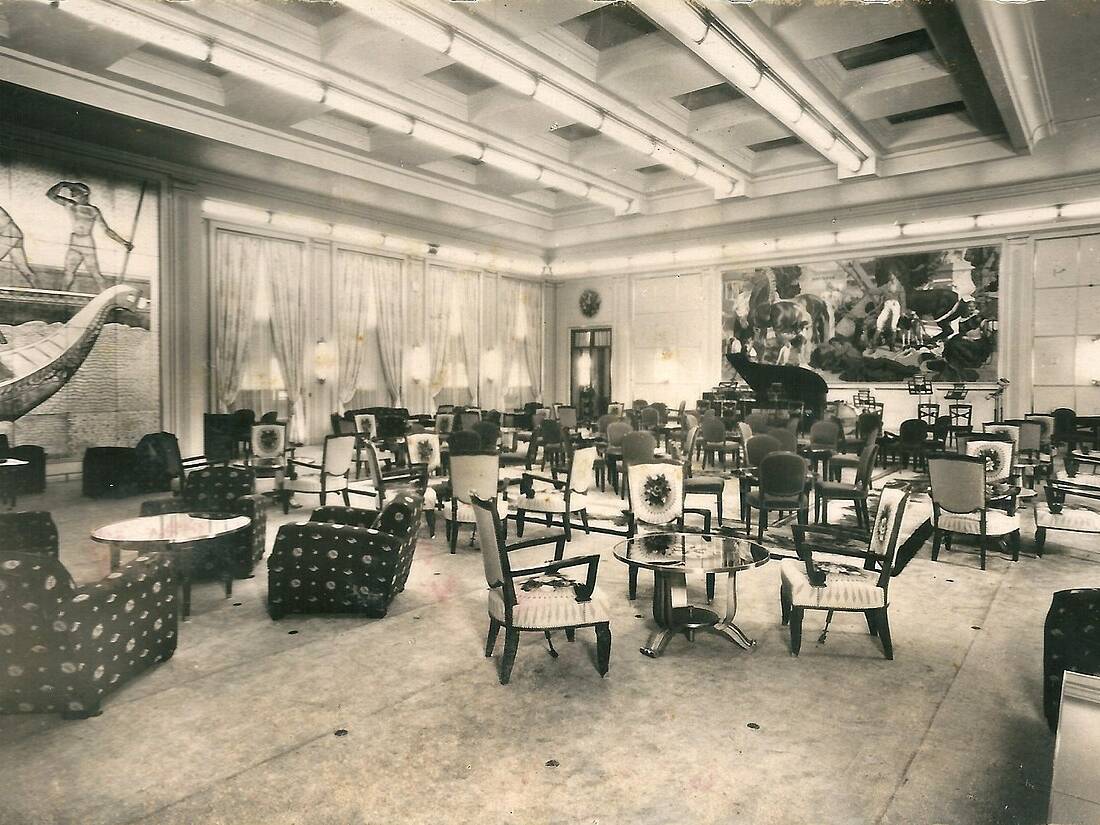The Bordeaux cupboard is certainly the most prestigious piece of mahogany furniture that a quality house could afford in 18th century Bordeaux. Both prestigious and practical, this precious piece of furniture is available in a variety of woods and ornaments. Whether it is placed in castles or private mansions, the mahogany armoise reflects the social success of a family.
Characteristics of the bordelaise cabinet
Always high and imposing, the Bordeaux cabinet is always made of a very beautiful mahogany whose origin will evolve in parallel with the trade of the Bordeaux door.
The first constant of these cabinets is their characteristic gendarme hat, crowning the top of the cabinet. The centre of this cornice is always higher than its extremities and recalls the shape of the bicorn always worn by the students of the École Polytechnique.
If the line can be more or less pronounced, the recurrence of this motif makes it almost an indispensable part of this piece of furniture. Nevertheless, as in all crafts, the exception exists.
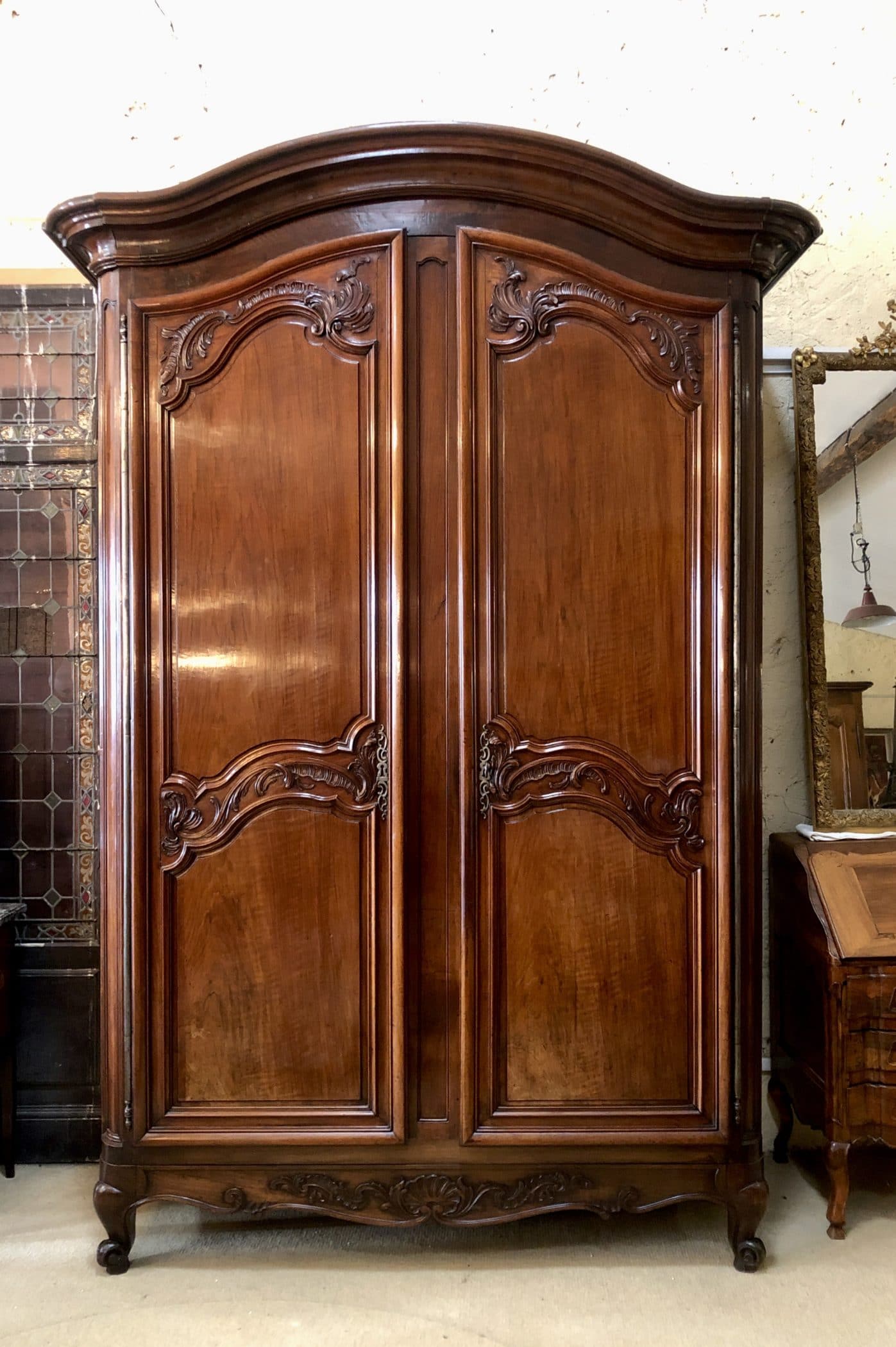
Each door leaf is carefully carved, decorated with motifs that are usually foliated and that regularly underline the upper and middle curves of the doors. This movement lightens a piece of furniture whose rigorous vertical lines remind us of its height and the solid plumbness that anchors it in a room. The Louis XV style – although softened – serves mahogany here and magnifies it to exploit all its subtle nuances.
From the beginning of the 18th century, two types of mahogany found favour with clients and cabinetmakers:
- Cuban mahogany is commonly referred to as Swietenia mahogani, which comes mainly from Santo Domingo and has a dark reddish-brown colour.
- The Honduran mahogany, Swietenia macrophylla, is clear and softer than the previous one. It comes from all around the Caribbean and will seduce in particular the English as well as the Parisian cabinet makers.
However, it was not until the 1770’s that a speckled mahogany with tawny shades reached the French workshops and was a great success from the start.
For aesthetic reasons, cabinetmakers sometimes combine these exotic species with lemon wood or guaiac, giving rise to the so-called “West Indian” cabinets from Bordeaux, with their elegant contrasting effects.
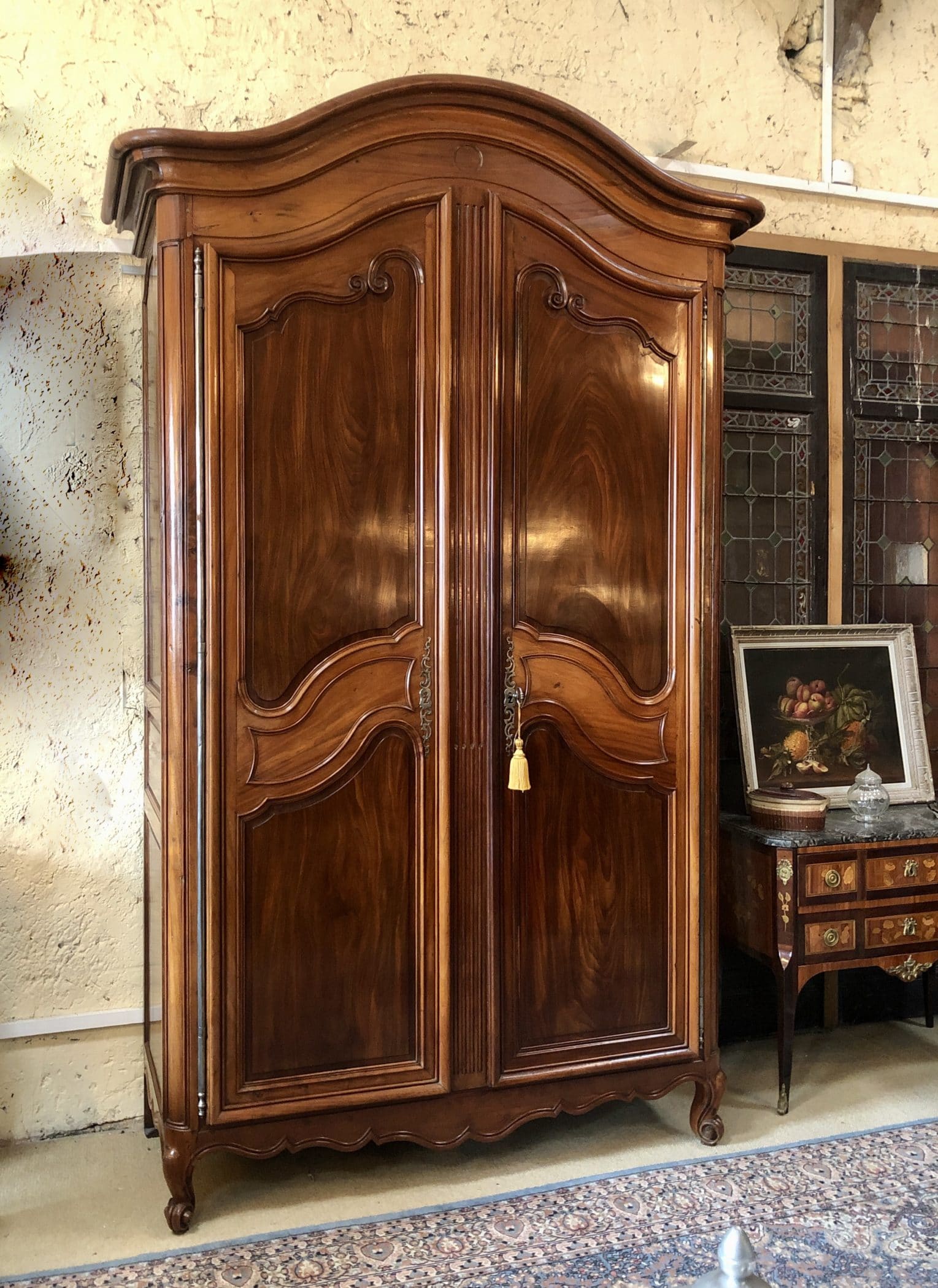
One more detail indicates that this prestigious piece of furniture was open and available for all to see. The ironwork – locks, escutcheons and especially the cremone bolts – are most often worked in cast brass or iron and offer delicate metal lacework, adding to the interior of the furniture what the exterior mouldings bring to the doors.
Because the role of the bordelaise cupboard goes far beyond the storage of linen or dishes. This piece of furniture – which made a superb wedding gift – was usually open at all times and displayed on its shelves, sometimes slightly moved, the luxurious objects that were the pride of the masters of the house. Chinese porcelain, silverware and shaped pieces could be admired as can be seen in the Musée des Arts Décoratifs in Bordeaux.
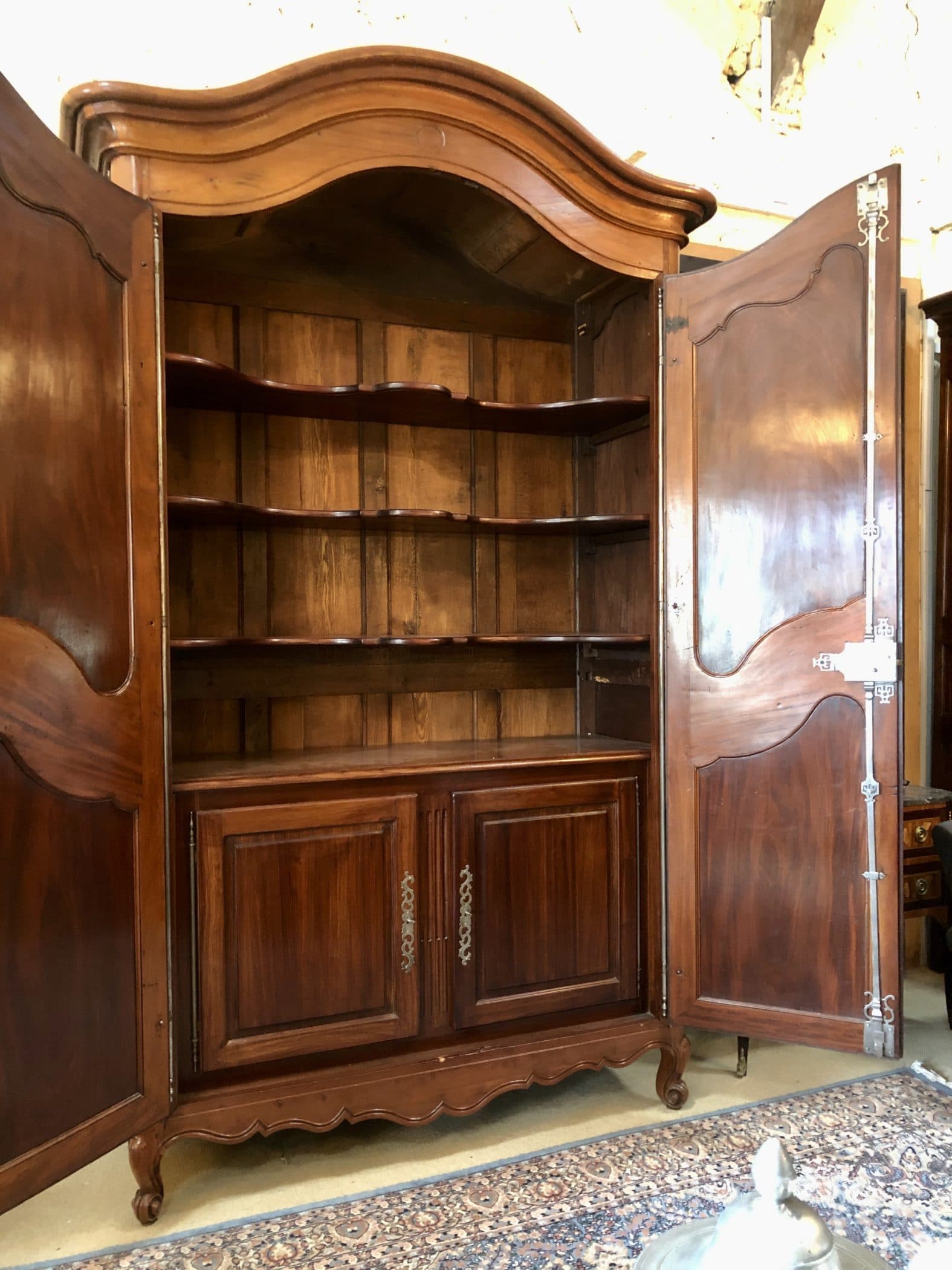
Sometimes a small sideboard in the lower part of the room can be used to hide laundry, cutlery or less graceful objects. To top it all off, some display cabinets have light arms on the inside of their doors that literally highlight the prestige of the lucky owners.
The Bordeaux wardrobe at the heart of a new bourgeoisie
Already well established in the 17th and 18th centuries thanks to commercial exchanges closely linked to wine growing, maritime trade was to take a sad part in the triangular trade. If this activity will never reach that of the port of Nantes, it would be dishonest to deny the economic importance of the slave trade in the economic development of the port of Bordeaux.
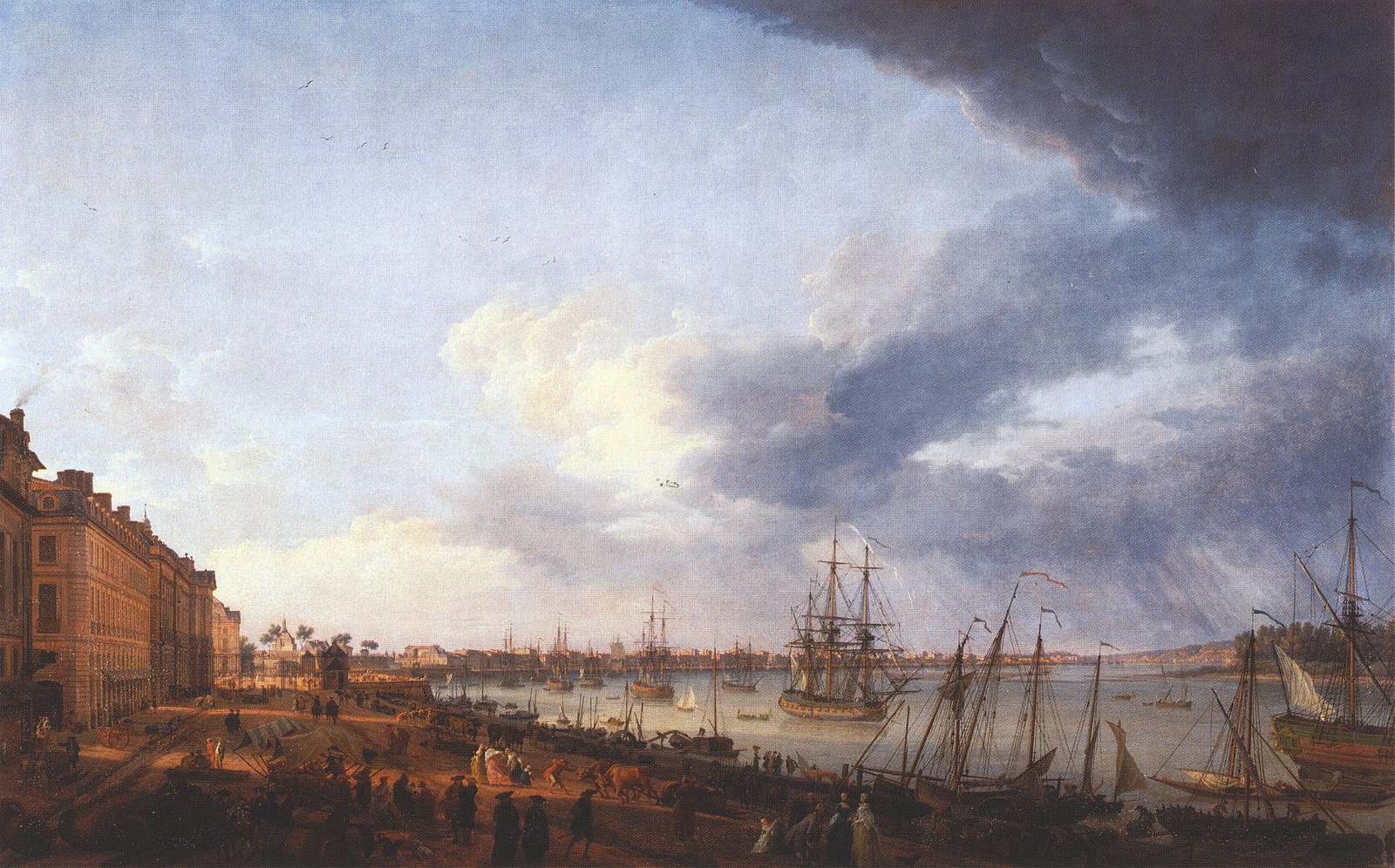
Trade between the colonies and the metropolis quickly enriched shipowners, merchants and a trading bourgeoisie who were quick to invest their newly made fortunes in real estate. The city thus took advantage of its advantageous position in the Gironde estuary, at the crossroads of the Atlantic Ocean and the lands of Guyenne and Gascony; at the dawn of the Revolution, Bordeaux was a major player in the French maritime economy.
Newly built mansions, second homes and castles all require furniture that is equal to the exquisite taste that prevails everywhere. The aristocrats and bourgeois visiting Bordeaux never tire of testifying in their correspondence to this acute sense of aesthetics that flourished everywhere.
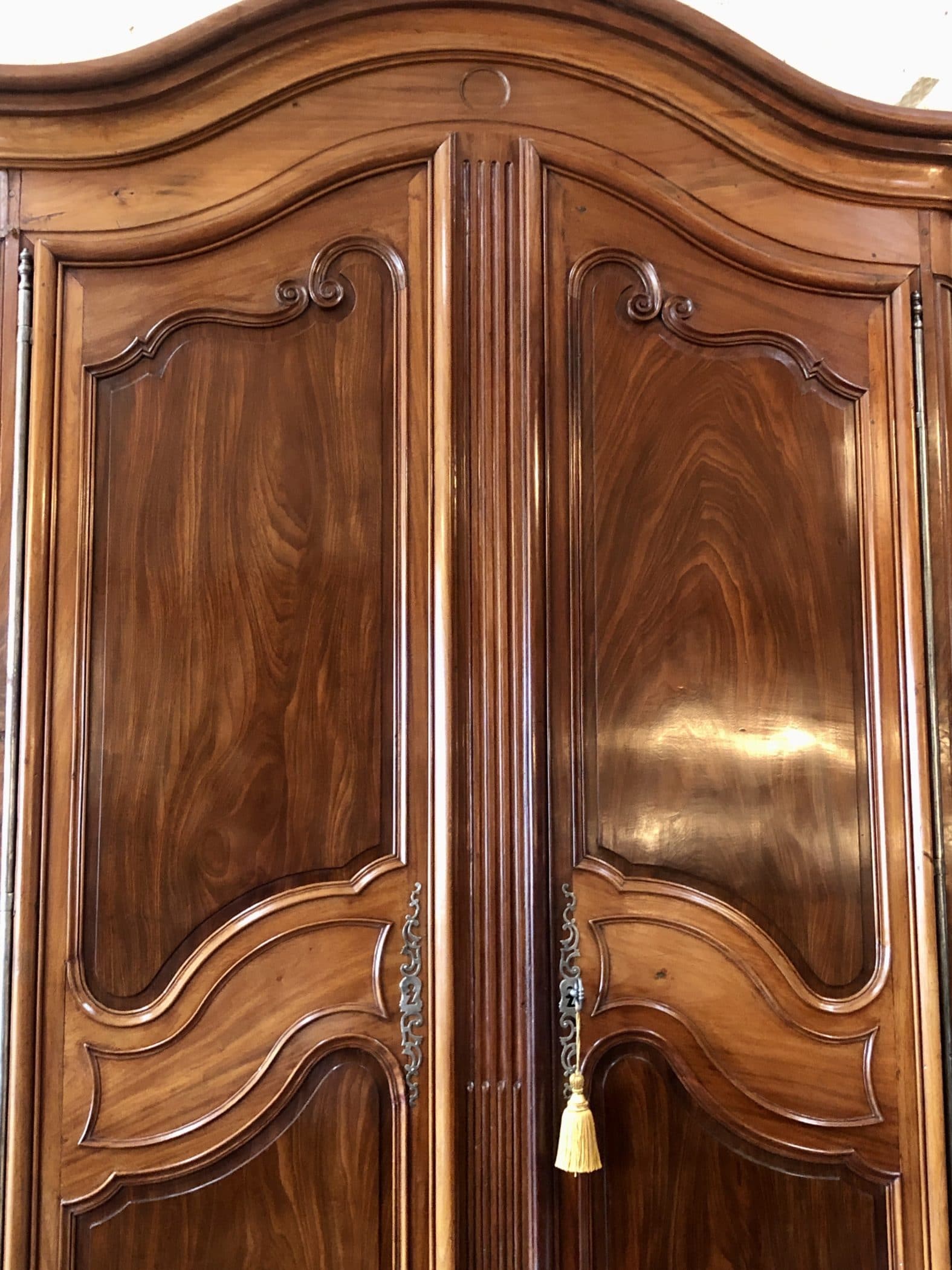
From now on, there is no question of using anything other than the exotic woods that make these new families so rich. Of course, the French ships do not fail to unload logs of this beautiful mahogany that we want everywhere. However, other fleets stand out in this particular supply. This was the case with the Dutch fleet, which – although modest – was extremely well equipped, allowing it to quickly take over the retail timber trade, especially from 1753. Discreet and efficient, the Dutch installed a corresponding compatriot in each port of the estuary, well established and anchored in the local activity; knowing the needs and corporations of the gabariers, these intermediaries organized cargo exchanges without ever encroaching on the redirection of goods inland, the prerogative of the gabariers.
In Blaye in particular, the bulk of the trade with Dutch ships took place on the Ile Verte, from where barges left for Bordeaux, Langon and even Libourne.
Port furniture: notable cabinetmakers of Bordeaux
Throughout the 18th century, the production of this prestigious mahogany furniture required a skilled workforce, the great names of which were to be found in the guild of carpenters and cabinet makers. From 1754 to 1782, no less than 125 masters were appointed, a considerable number considering the technical and financial requirements of the jurandom.
In addition to these masters and journeymen, there were also the works of free workers, most of whom worked near the religious communities’ compounds. Among the latter, Abraham ” dit Cadet ” practiced ” near the Chartreuse ” from 1783 to 1791 where he made a name for himself with a superb production of mahogany furniture and tableware.
Another, Jean Bresler dit Alsace (a nickname that probably betrays his native province), practised under the reign of Louis XVI in the Chartrons suburb, in the rue de Notre-Dame that we know well. Still in Chartrons around 1790, the cabinetmaker Koenig also produced furniture in exotic wood and mahogany.
Around the church of Saint-Seurin, the Dubois brothers, cabinetmakers, made a name for themselves in mahogany work. Their colleague Piessi, known as Rouerque, practised in the same district, also during the reign of Louis XVI.
Unknown or forgotten apprentices, many slaves were sent to Bordeaux for their apprenticeship. The owners, unhappy with the lack of skilled workers and craftsmen in the colonies, reserved a slightly less tragic fate for the “talented Negroes” than for their companions in misfortune. At the end of the 18th and beginning of the 19th centuries, censuses and archival documents attest to the presence of these apprentice cabinetmakers who, thanks to this craft training, had a much better chance of being emancipated and finally regaining their freedom.
Marielle Brie
Art Historian for Art Market and Cultural Media
Author of the blog Objets d’Art et d’Histoire
Autres ressources et documentations
28 June 2025
Plaster Sculptures, Plaster Casts
For a long time, plaster casts suffered from a poor reputation. Often regarded as crude replicas, and sometimes even dismissed as inexpensive imitations, they nonetheless had…
17 April 2025
The Middle-Ages Furniture
Rare and highly sought-after, Middle-Ages furniture is making a strong comeback. An overview of this market, where enlisting the guidance of a professional is strongly advisable.
18 March 2025
Murano Glass Furniture
Since the beginning of the 20th century, Murano glassmakers have been exploring new horizons. After classic lighting and decorative art, Murano glass is now used to adorn…
16 December 2024
A bronze triton after the sculptures of François Girardon (1628 – 1715) in Versailles
This fountain element is all the more admirable as it is sculpted after the masterpieces of the Pyramid Basin, on the parterre of the North Wing of the Versailles gardens.
18 November 2024
Tyco Bookcase, by Manfredo Massironi, for Nikol International
A pure creation of optical art research in the 1960s, the Tyco library shelf designed by Manfredo Massironi invites the viewer to bring the work of art to life on a daily basis.
3 August 2024
The Ocean Liner Style
In the 20th century, the immense ocean liners connecting the Old Continent and the New World were ambassadors of tastes and innovations on both sides of the Atlantic.



